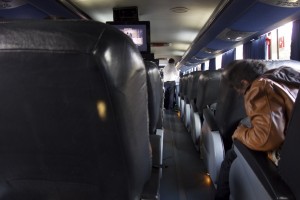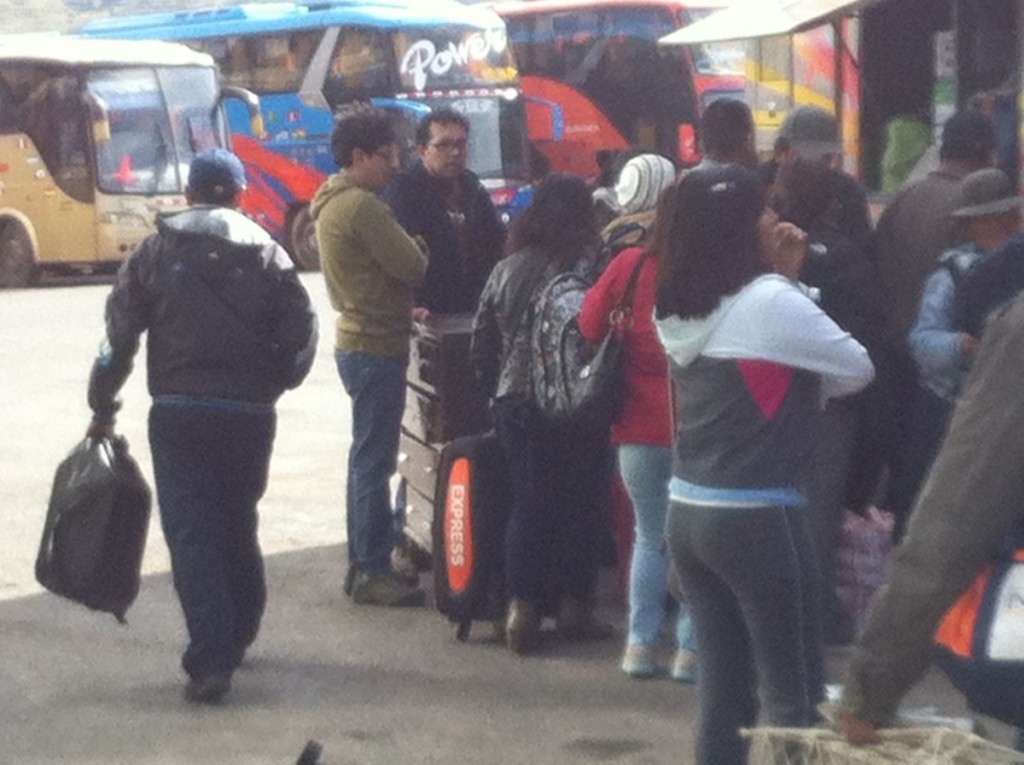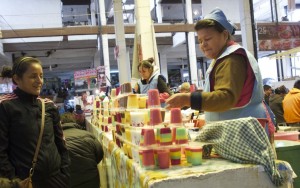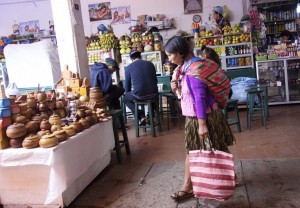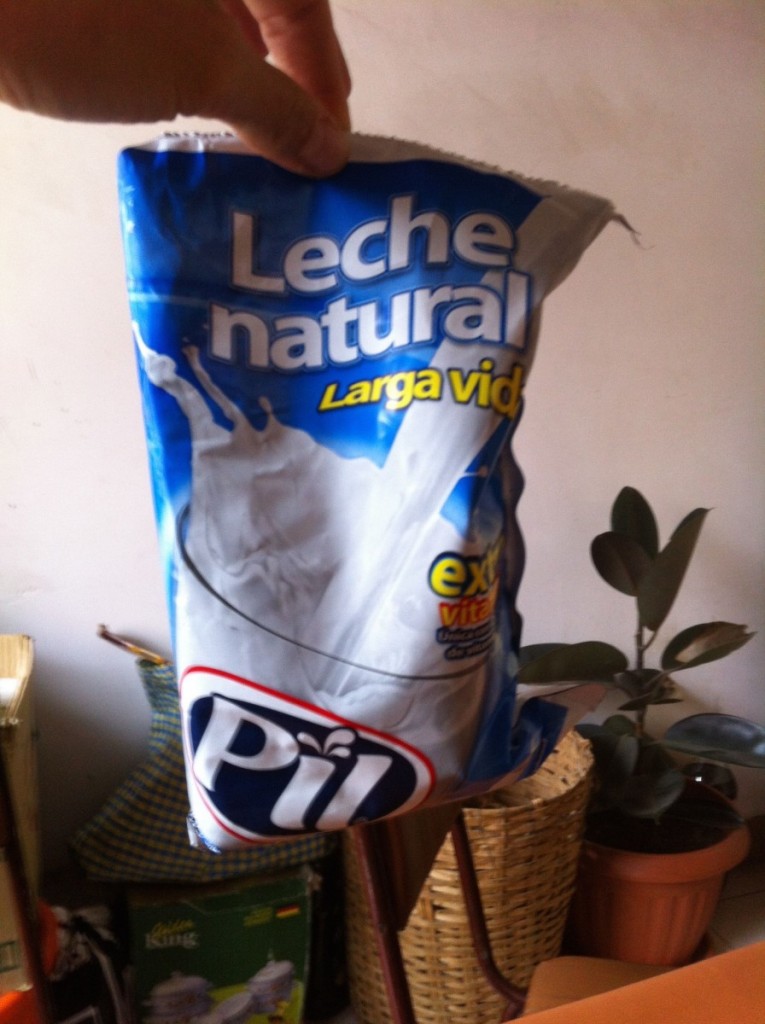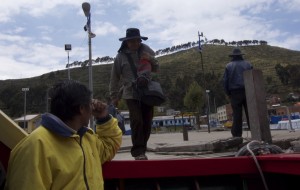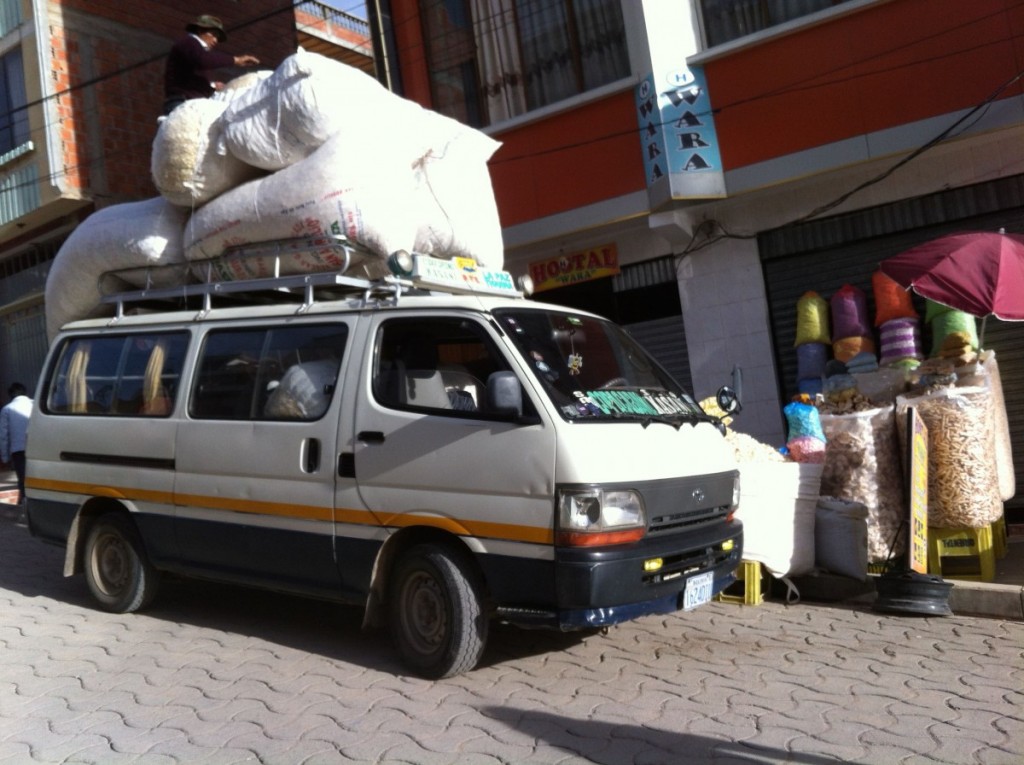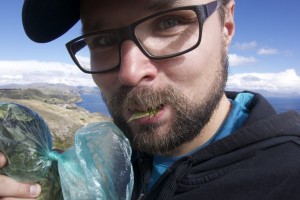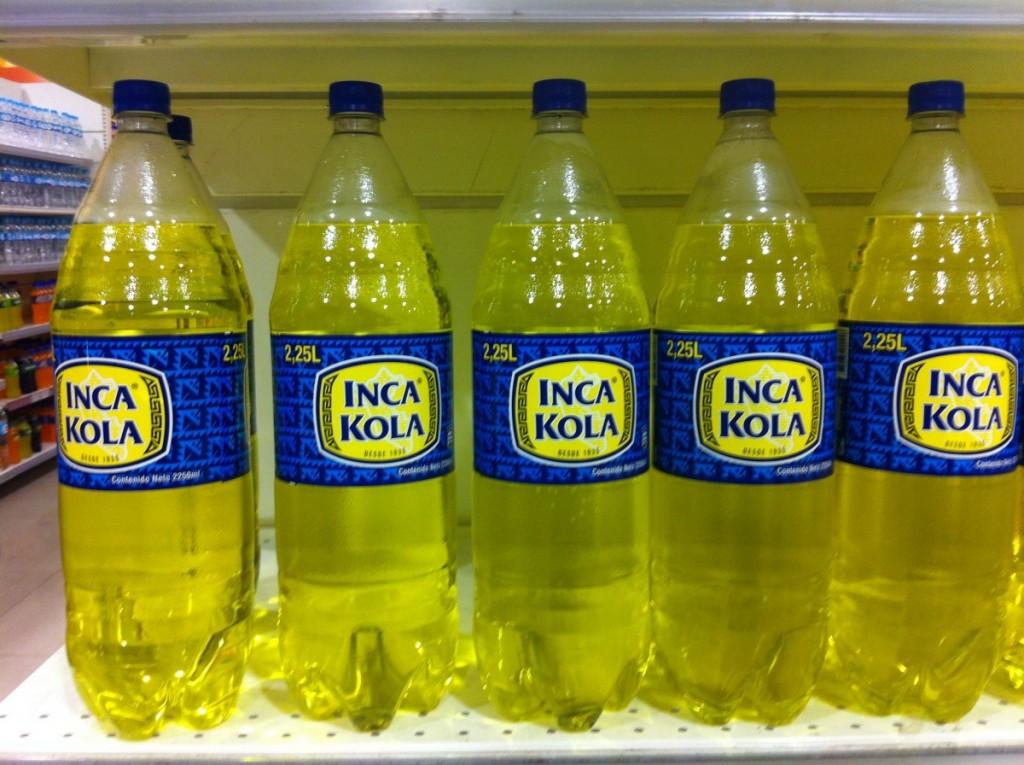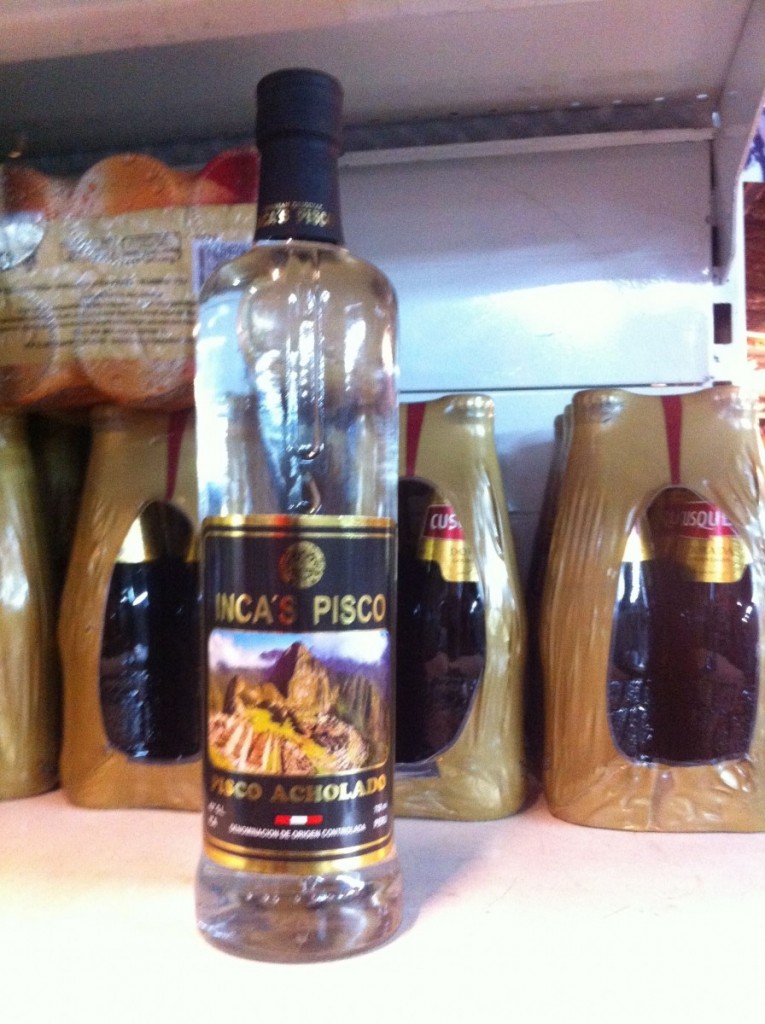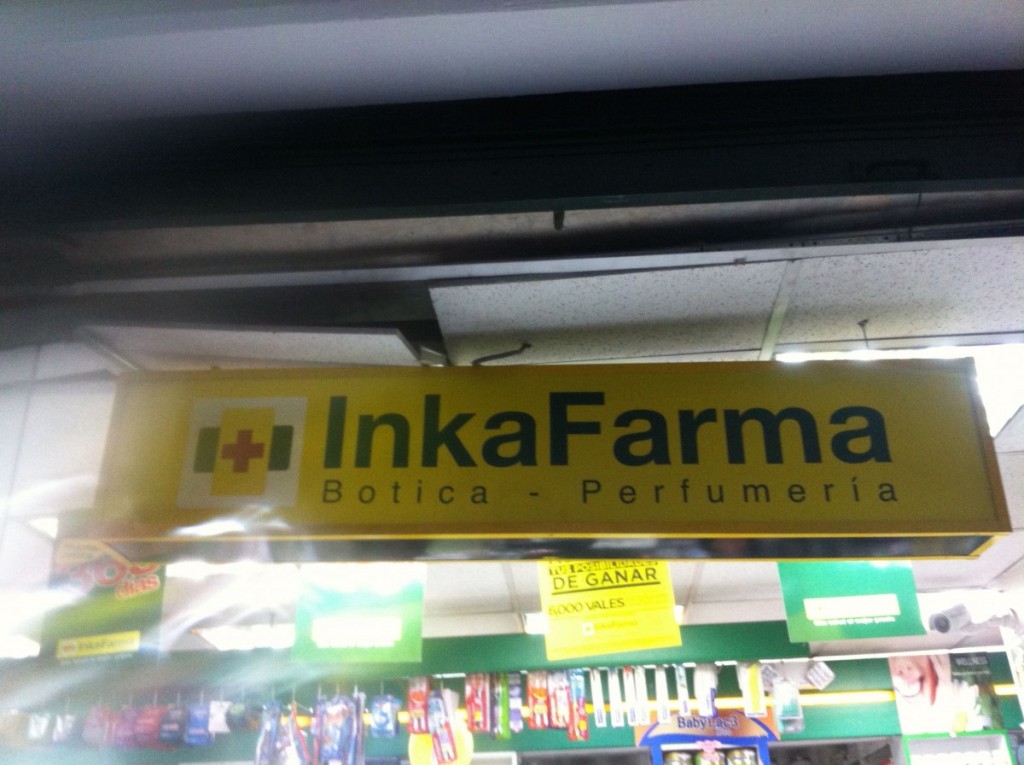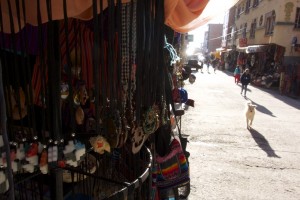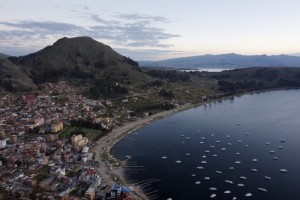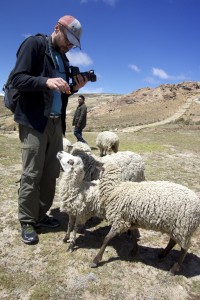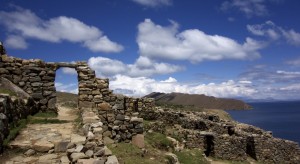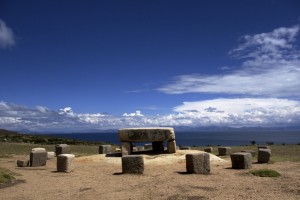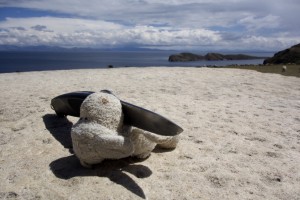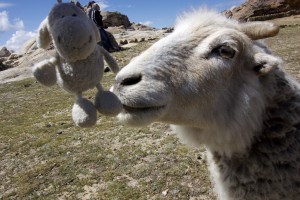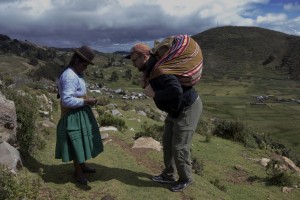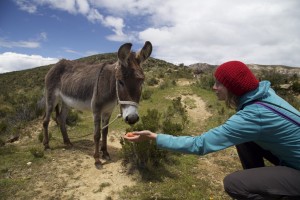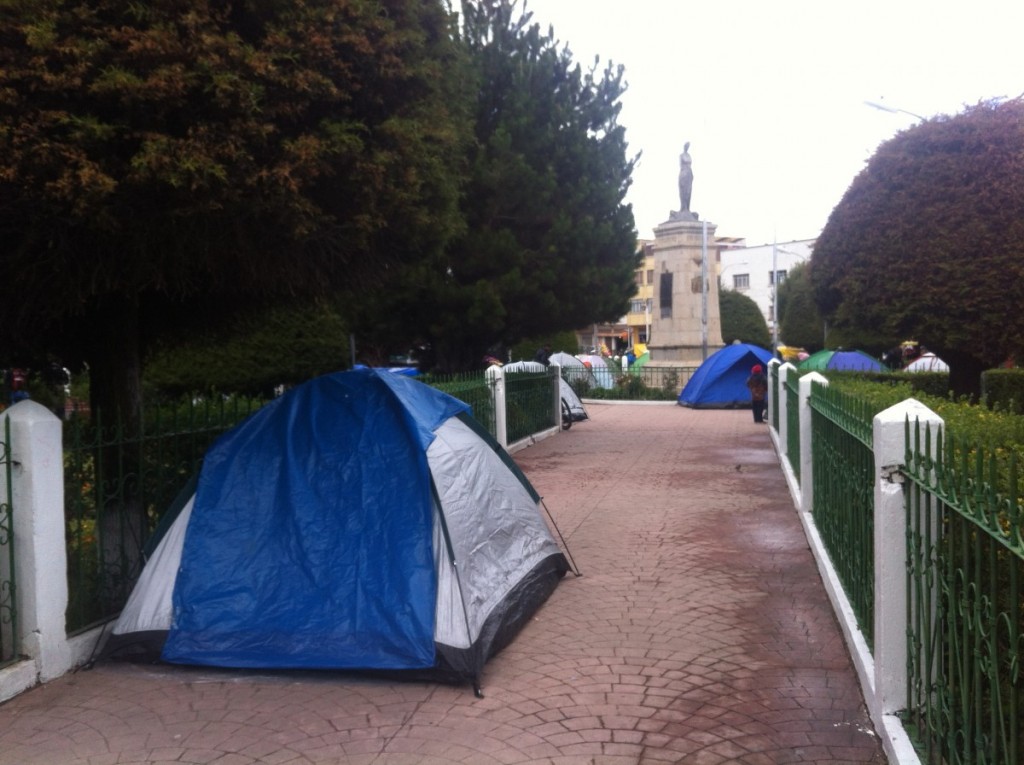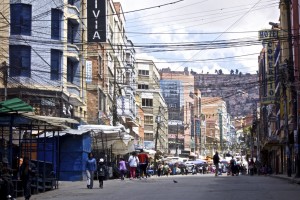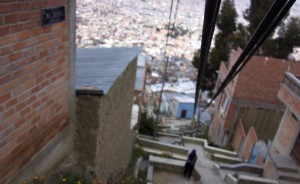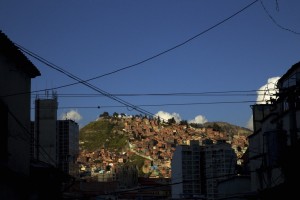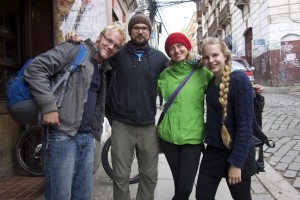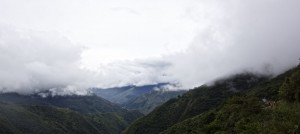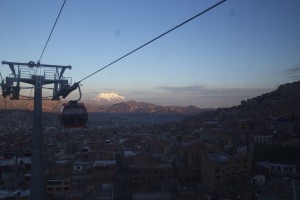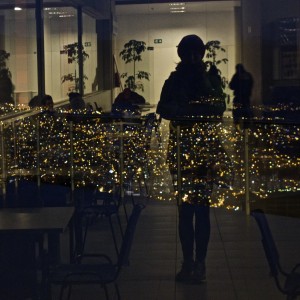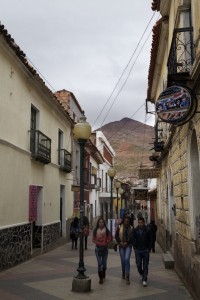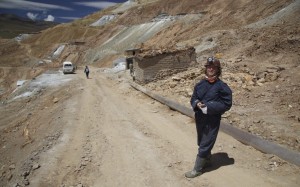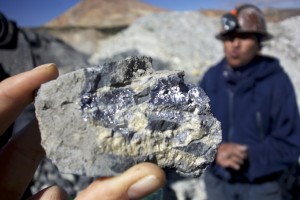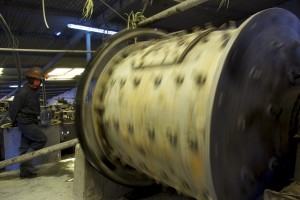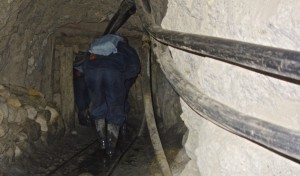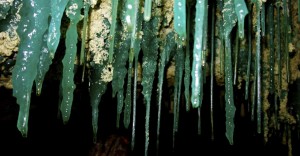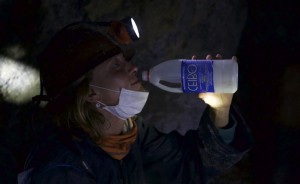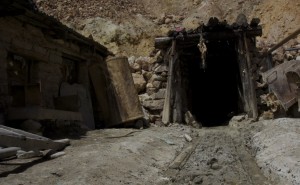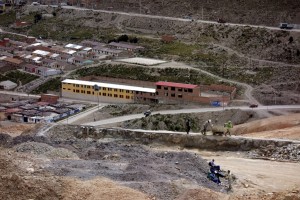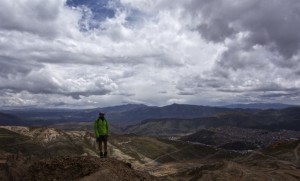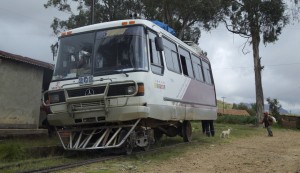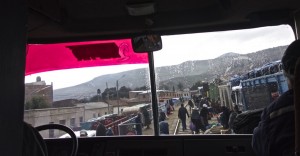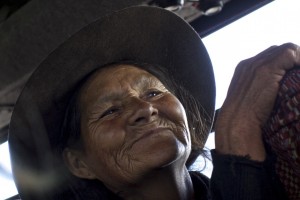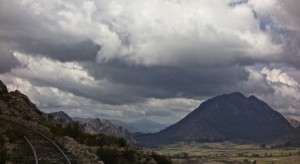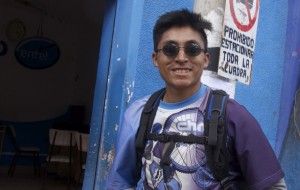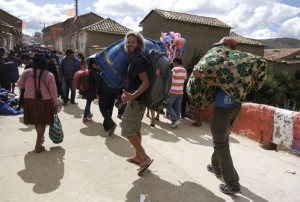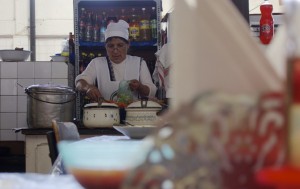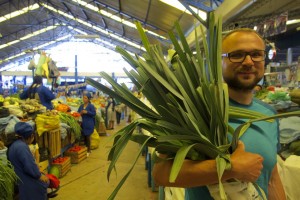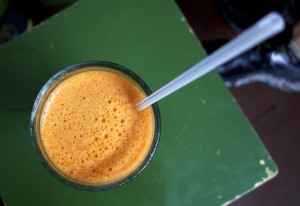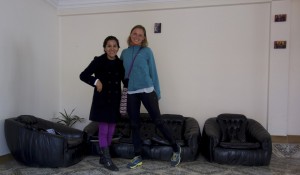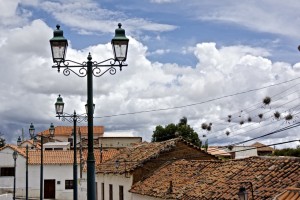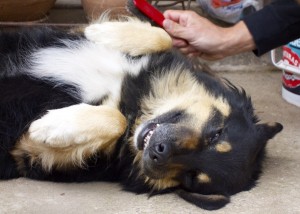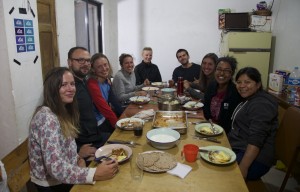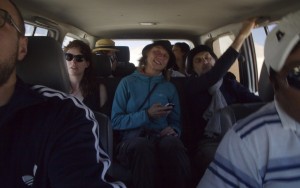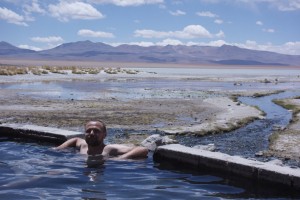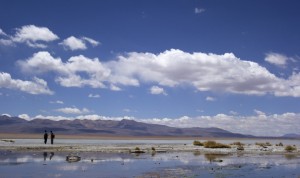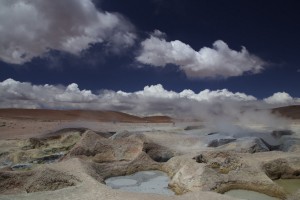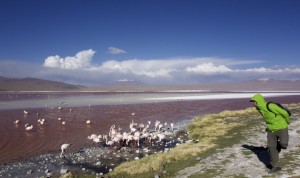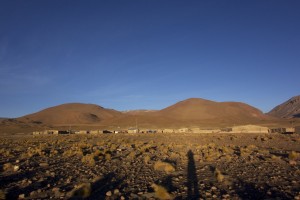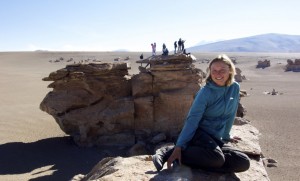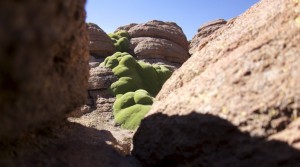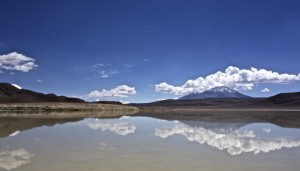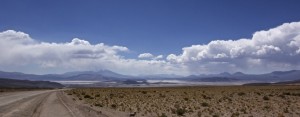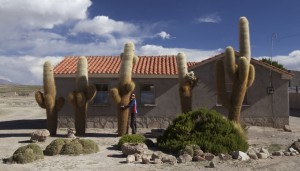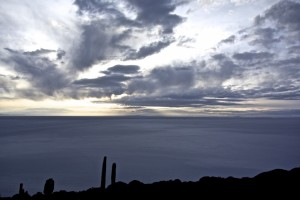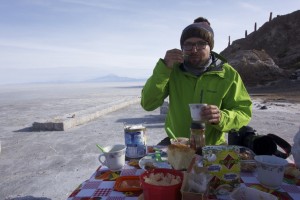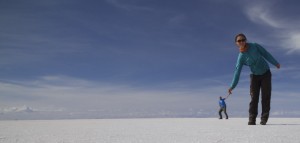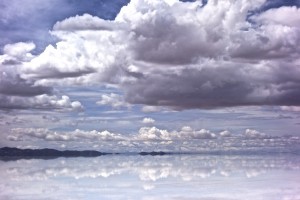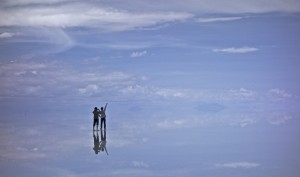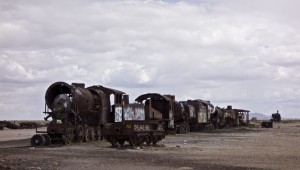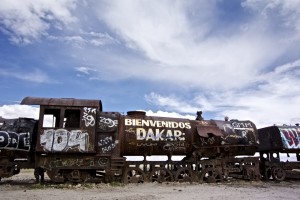The way to travel around South America are busses! You can fly, but it’s usually only affordable within one country, if at all. Interestingly bus fares and bus standards vary widely between countries even if you only take into account tourist busses.
Archiv der Kategorie: Bolivia
Lessons learned about South America
Many funny things we observed in south america don’t differ so much between the countries you will get the whole collection in one rush.
Chile and Argentina, both somewhat influenced by the europeans since a few centuries kind of similar. Both countries have an amazing landscape (we only saw Argentina’s close to the chilean boarder), produce good red wine (Argentina’s is a bit better) and speak a strange version of Spanish.
1. Chilean love sugar, so much that they even sell sugar light in supermarket to reduce calorie consumption.
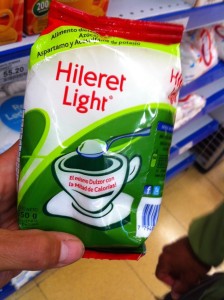
2. Chliean love color, especially in yoghurt. However the only seem to use one kind of color. Independent from the flavor all are bright pink.
3. There is no bargaining in Chile, not even on the markets. So you actual never feel cheated, but prices are higher than in the rest of South America.
4. Chilean don’t seem to have a sense of weight. While everybody tries to reduce weight while hiking, they even carry 1.4 kg heavy cookers around.
5. Steak is so popular in Argentina that the only kind of knives in Hostels are actual steak knives. It gave us a hard time to spread the butter on bread.
6. Argentines love their dulce de leche (some weird mix of caramelised milk and sugar) and put it into everything. I don’t like it but since it’s usually very brown I regularly misjudge it as chocolate.

I find it quite significant that the ice cream shop offers two kind of chocolate but four kind of dulce de leche ice cream.
7. Argentina is surprisingly expensive. Knowing about the unofficial dollar blue rate of 12.5 compared to the official 8.7 really saved us some money.
8. Argentines have a great relation to plastic bags. Every single person in the queue in front if me brought a fabric bag to carry their groceries home.
9. Siesta is still written in big letters in Argentina, causing two stupid looking persons in front of a supermarket more than once.
10. This is one for Nanna. Argentines are wild with Fernet, mostly Fernet Branca. They drink it for every occasion and mix it even with coke.
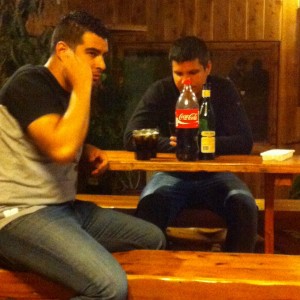
11. We never figured out for which reason but ham and cheese are really popular ingredients in the Chilean and Argentina cuisine. You get it with the scrambled egg in the plan, on sandwiches, in empenadas, on top of what they call Milanesa (in principle Wiener Schnitzel) or just pure.
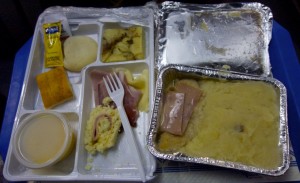
12. Chileans knock on toilet doors. What a great habit, than just pushing down the toilet handle.
13. Surprisingly Argentina is the first country that really did something against plastic bags, so most people actually bring fabric bags for shopping. I like!
14. Despite the fact, that coffee is produced in south america they don’t really nurse a coffee culture. Most just dink freeze dried coffee with lots of sugar. but I kind of like the teabag version. Really handy in busses.
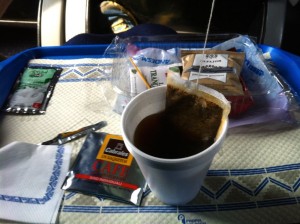 15. Of course they love soccer and are so proud. Even the screens in underground stations allow you to keep track off the doing of your favourite team.
15. Of course they love soccer and are so proud. Even the screens in underground stations allow you to keep track off the doing of your favourite team.
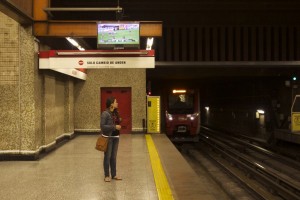
Bolivia is so very different form Chile and Argentina. It’s characterised by the Andes (that maybe the european settlers just didn’t bother to cope with) and what they call the andean folk.
Isla del sol – no, not Bornholm
Copacabana (the original one) is located at the Bolivian shore of the famous lake Titicaca. It’s a pretty quite place inhabited by quite some hippies along with the indigenous people. It’s popular with any kind of tourist, so you find quite a choice of cafés, restaurants and people trying to sell you trips to the close by islands or bus tickets.
While in Copacabana a trip to take is Isla del sol or the place where the sun god was born.
Boats to the island leave very day at 8:30 and 13:30 and you can just go down to the shore and buy a ticket for 3 US$. The boats look actually quite nice from far but turn out to be white colored wood with an attached diesel motor and get helplessly overloaded with tourist. When I first feared drowning due to a break down of the boat this fear was shortly after replaced by the fear of dying of carbon monoxid poisoning. It started raining so windows were closed and all the motor fumes accumulated in the inside of the wooden frame. However I seemed to be the only one concerned about that.

The boat was just a little packed with people and the fact that one motor was broken did not accelerated our journey.
After the total of three hours (not two as promised) we arrived in Challapampa at the nord end of the island. From here we headed to the famous Inca ruins (not without paying 10 BOV = 1.5US$ entrance fee) that seemed to us a bit to good looking to be thousands of years old, but who are we to judge. From the ruins most tourists including us head south to Yumami, but since we planned to stay there overnight we had all the time and the wide view over the lake, Bolivia and Peru almost to our selfs.
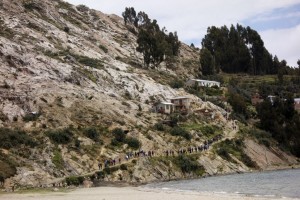
According to the ants, it must be a quite popular place. We stayed behind and had therefore all the attractions to ourself later.
Not far from Yumami we were hooked by a ten year old and his alpaca who sold us two his aunt, who owned a hostal in Yumami. It was quite simple but for 8$ per night we didn’t complained (later we found out that this is the average price and we could have gotten a better room). In a tiny restaurant in the middle of the eucalyptus forest we had our first candlelight dinner in South America and since the husband of the chief had a meeting until 8 pm we had a lot of time to enjoy the atmosphere (waited 2h for our food, but it was definitely worth it).
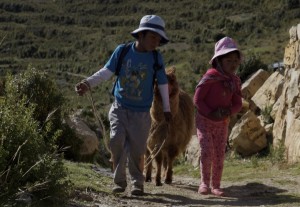
The little muggers and their Alpaca that hooked us to their aunts „hostel“. They even asked me for a tip later. Wonder what they raise their kids to here. 🙂
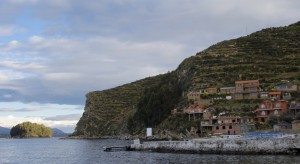
Yumami, spreading from the hill to the waterfront including some a famous Inca staircase and many donkeys which carry the beer for the tourists up the mountain.
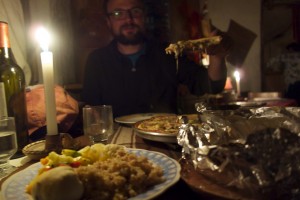
Finally, steamed trout (a specialty from lake Titicaca though imported to the lake from Canada) and Pizza!
The next day we chose the rout via all the small villages on the island and experienced a little village life, with all the cute and not so cute animals and all their leftovers on the path. Tom helped a old lady down the hill and a nice lama got the great idea to spit on me to Toms great amusement (didn’t even got a picture of it).
We left Copacabana Easter Friday, when it got really funny because lots of people from all over Bolivia pilgrim here. Luckily camping is allowed in Bolivia where it’s possible, so people just slept on the central plaza :).
LaPaz and the fast way down
After we spend two more nights in Sucre (didn’t wanted to miss out on quinoa cake and another round of squallyball) we took a morning bus to LaPaz. Actually we wanted to take an overnight bus but because of the election all over Bolivia on Sunday absolutely nothing was going to work from 0:00. They stop selling alcohol already on Thursday, every kind of traffic is prohibited except bikes, and absolutely all shops are closed. So we arrived in the biggest city of Bolivia which was paralyzed.
On Sunday we literally walked over streets of LaPaz following the constant ascent of the altiplano surrounding LaPaz taking out our breaths but giving an amazing view over the hundreds of thousands red brick houses forming the city. And over and over again somebody would greet us with a friendly „buenos tardes“, a kindness being new to us in Bolivia.
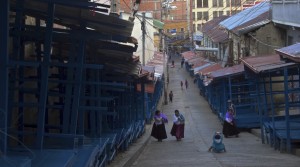
The day of the election was a holiday for most people but the kids really got some fun out of the empty streets, because not one is flat.
In the afternoon just aiming for some food we ended up in a cafe with Kim and Ben where we spontaneously booked the adventure for the next day: a downhill ride on mountain bikes over the formerly deathliest road in the world.
The day started with a simply breakfast before a guide and a driver loaded the four of us into a Minibus and driving us up to 4700 m to the starting point. There we were dressed as warriors and put on full suspension bikes and off we went racing down the paved road with 40-50 km/h
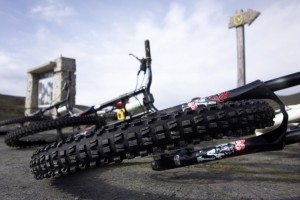
This downhill bikes seemed a little overkill for the paved road we started on, until we got to our real destination.
As soon as I got used to that we were loaded again in the Minivan and driven to the road that really was the death road. This was the real challenge being hardly broad enough for a car, of rough gravel and with a very very steep cliff to the left side we were told to drive close to it all the time so passing cars had less trouble!!! Unfortunately (or not because you couldn’t make out the steepness of the cliff) the day was very foggy blocking the view on the incredible Bolivian landscape. To sad also because we were passing several climate zones on our 3000 m altitude race down.
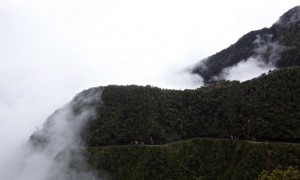
The death road kind of looks cute snuggling its way around the hill side until you recall that once upon a time trucks were using due to the lack of alternatives (for an impression watch TopGears Bolivia special).
On the finish line we were brought to a „hotel“ (rather a falling apart barack, but who really cares) with a swimming pool and lunch. Which was okay but while hanging out we were eaten by sun flies and my whole body was itching the next day. The trip was pretty fun but I still think 80$ is a bit of a rip off considering average Bolivian prices.
To finish off our visit to LaPaz Tom needed a ride with the newly build cable car (Evo paid the Swiss company Doppelmayer 300 mil. US$ for 7 lines.Very modern, clean, shiny and so not typical for Bolivia). They make traveling to the high ends of LaPaz really effortless and would make a good way to get a great view over the city, if the inhabitants wouldn’t just build houses into the view.
Potosi – a visit to the devil in rubber boots
The alarm went off at 5:45 am and Tom just asked whether I want to take the bus. Me and my bad stomach readily agreed to that even though we would miss the scenic train ride to Potosi (something Tom couldn’t forget about so we were actually taking the train back three days later).Three more hours of sleep and three hours in a creepy bus later we arrived in the highest city in the world at 4090 m and felt surprisingly good even though it was quite cold up here (our room had a TV! but no radiator so we slept in long underwear and with three blankets.).
We crawled for about 2 exhausting hours visiting the miners that work there in average 12h, chewing coca leaves to not feel the hunger while drilling holes for explosives, carrying 20kg of stones in the back up the ladders between different levels our pushing wagons weighing tons out of the mountain. Most of them die in their fourties of lung diseases. We also paid a visit to the miners devil the Tio, which owns the erze. The miners regularly bring sacrificial offerings to ask for better ore quality and protection.
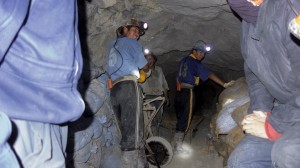
The guys in the back unloading the 20 kg heavy bags of scraps are supposed to be only 16 years old (still look younger). The guide told us kids start working in the mines when they are about 8 years old. Even though its forbidden, they need the money.
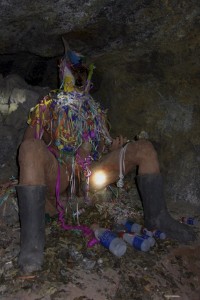
„El Tio“. God rules on earth, but below earth it’s the devil you need to keep an eye on. Anyway most miners more see El Tio as god below earth, who you have to respect. That’s why he is wearing rubber boots as the miners. Oh and of course the little insulting feature is an appeal for fertility for the miners.
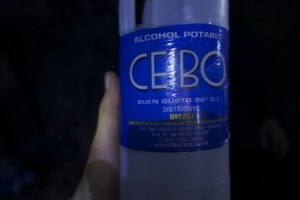
Miners offer coca leaves, cigaretts and alcohol to El Tio. And here something for the food chemists. They offer and drink 96% alcohol with good taste („buen gusto“). One liter of this cost 10 BOV, one liter of beer 20 BOV!
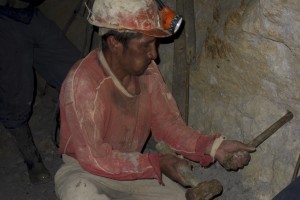
The guy here is drilling a hole for the explosives by hand (he can’t afford a drilling machine). The lump in his cheek is not from any disease but a bunch of coca leaves.
If somebody wants to know more, watch the movie „the devil’s miners“ about the 14 year old Basilo working in the mines. The movie is 10 years old and we were wondering what became of the boy. However we got three very different versions. Bertha from our homestay said he is indeed a teacher having three kids, Wikipedia says he is studying and partly still works in the mines and our Tour guide said he never worked in the mines and nowadays is a alcoholic working as a driver in Potosi? Officially children labor is not allowed, but nobody obeys the rules and kids as young as 8 years work down there. I also asked our guide whether conditions change with the new president but he said it only got worse and most miners would like to put a bar of dynamite into the presidents arse.
The next day we tried to climb the Cerro Rico, which was a quite different experience to hike between rubbish, rubble from the mines, mine entrances, trucks and miners, but the view over Potosi was exceptional.
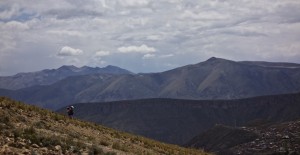
The paths that we used were not any kind of leftovers but are used everyday by the people how can’t afford to live in the city and therefore live in little huts on the mountain.
And than the day came to take the „train“ back to Sucre. A bus on tracks! You can’t call Bolivians not to be creative.
The ride (with thrilling 40km/h) was really entertaining. First we had to wait until the market cleared from the tracks in Potosi, than several obstacles like wheelbarrows and pigs, people getting of at nowhere, people asking the driver to take a bag of potatoes to relatives slowed down our journey and than again and again we were struck by the beauty of the green mountains of the altiplano sprinkled with tiny Bolivian farms. This trip really gives you a look on the life in the Bolivian countryside. Oh but I forgot to mention you shouldn’t be afraid of heights because the train is constantly driving along steep cliffs without any obvious security vorkehrungen.
Tarabucco – an unforgettable trip
This small village 1h bus ride from Sucre is popular for it’s every Sunday market and it’s festivities on the third weekend in March for Bolivias Independence Day. By chance we happened to be in Sucre on the third weekend in March and our Homestay „mum“ recommended us to take a trip to Tarabuco with a guy she knows. You can go their independently, but she told us, that it will be hard to find accommodation in Tarabucco on that weekend.
Our trip started on Saturday afternoon at 3:15 pm with me feeling quit ill (I really considered skipping the trip.) Together with Sanchia, Lucia and Sean we enter the diverging bus (Yeah well it’s Bolivia.). After we collected more people including our guide we headed off for Tarabucco. Unfortunately not for long, because after a short stop to check the conditions of a wheel we heard an explosion, saw the dust creeping into the bus before the bus stopped next to the cliff. On front wheel exploded. Yeah no reason to worry. Even though the driver couldn’t get the extra wheel loose he managed to exchange the broken one with one of the back twin tires.
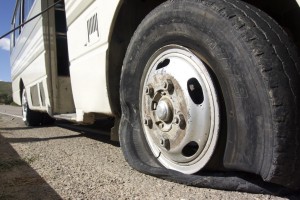
Having a flat tire on a bus ride in Bolivia is a common part of the trip, so better bring some food.
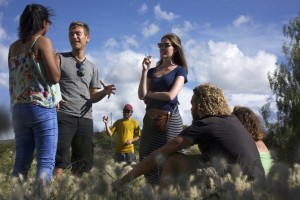
We used the time to get to know the rest of the people in our group. I mean it was sunny and the landscape amazing.
This one lasted for more or less 200m before it broke down with a puncture so we went for the safe version and loaded our backpacks and a stack of mattresses from the bus on the road and the bus was heading back to Sucre. A new one was to come.
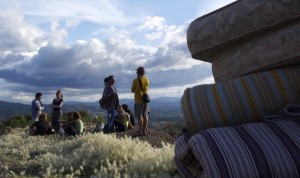
If it wouldn’t be for the hunger and the setting sun there were worse places to hang out and we seemed to be a good amusement for all Bolivians going to Tarabucco.
With a delay if three hours we arrived at the main plaza in Tarabuco. Unloaded the backpacks and mattresses that we only had to carry another 500 m down a by now dark dusty street to a small blue door. Behind the door waited what was to be our camp for the night. A moldy room that had to fit all 12 off us + 2 guides + 2 people that showed up during the night. We unrolled the 30 cm to short stained mattresses and prepared for the party to come.
First the guide let us to a rather simple restaurant were they severed us food of questionable quality. But the two chicken wings were deep fried so at least nothing was living in them. And then we headed off the the concert that was taking place in the huge sport hall. This was a weird thing in the beginning. Everybody was sitting on cold stone steps waiting for the concert to begin and stayed there even when the concert started. After an hour everybody in the group was so cold, that they wanted to head on. Our guide somehow seemed to be a bit overwhelmed by the requirements of his group since he let us to something that should be a party but was just a noisy dark room. And they actually wanted to charge us extra 10 BOV. So Tom and me decided go back to the concert and blended with the dancing locals which finally turned out to be quite fun. Funnily every single band had at least one guy playing the pan flute. Didn’t know that pan flutes are that popular in Bolivia. After the concert we just went for some more calories in form of a grilled street pizza before settling a bit uncomfortably in our room. At some point in the night also our guides returned drunken and noisy. And fell asleep were they falling. Meaning one of them next to Sanchia.
The next day started as the previous promised. A confused guide trying to find breakfast for twelve people, surprised that the market is crowded on a day like this and then tried to fed us on one roll and a coffee. On the question when the ceremonial dancing starts he didn’t know the answer either, so we finally gave up on him and walked around the city in our own, finally found the dancers and the festival square with the it’s eatable tower (after the festival the mayor distributes the food between the people).
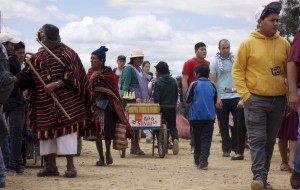
Ice creme was next to everything that can be fried to most consumed energy source on this festival. Interestingly most people didn’t drink alcohol during the dancing for Pachemama (mother earth). Only saw „gringos“ with beer cans in their hands.
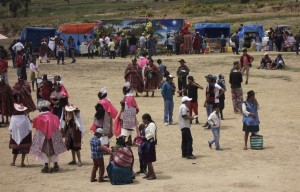
A typical scene found around the festival place, with dancers (only men), woman in their traditional clothing and a few out of place tourists.
We were supposed to leave at two so we had some backed through food before heading back to the house with the blue door. There the guide was waiting for us to take us out for lunch. We skipped that and according to the face of one of the French guys we didn’t missed out on something. So now we only had to carry our mattresses back the 20 min to the official bus station before we could drive back to Sucre without any further incidents. It was by far the worst „tour“ we ever attended.
At this point I have to say that Tarabucco and the festival of independence is really worth a visit. Alone the bus drive offering views of the open landscape of the bolivian plateau is great and with regular punctures you usually even have photo stops. The village has a big market selling whatever you can think of and the traditions of dancing to honor Mother Earth is something you rarely experience. Just book an accommodation in advance and take the public bus (Guys that took it the told us they had a puncture too, but only one.).
Sucre – aprendía español
My memories of Sucre are colored by the fact that I was feeling ill for most of the time (I will probably never find out why they always give you infusions when you go to foreign hospitals.), so I didn’t even manage to see much more than the market, our Homestay and the way to my spanish school.
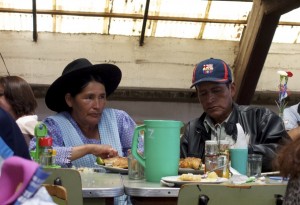
Feeling very untouristy eating at the market, but leave your fingers of the salad. They wash it in the river an not even the locals eat it without getting stomach issues.
Our favourite place in the central market, the fruit juice stands. You get everything freshly made with our without milk and/or sugar, if you ask for it.
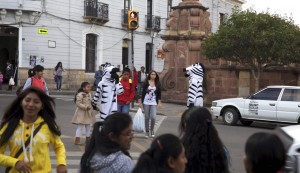
Zebras explaining how to use zebra crossing and jumping in front of moving cars, if their driver are to ignorant (of course the crossing are also equipped with traffic lights just lines on the ground would never work).
But as far as I can judge Sucre is quite a clean, quite and safe place. And even tough the name „Sucre“ doesn’t have anything to do with sugar the white buildings in the center somehow reminded you of icing on a cake.
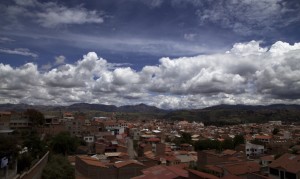
Sucre lies, like most andean cities in a valley, where the centre is the lowest point and the poorer districts crawl up the hill sides.
What really made a difference was our stay with Bertha and her little family. We spend in total two weeks in her Homestay, playing with Coco the lovable dog that hates locals but loves foreigners, cooking food with Bertha and other guest, saw Bolivian movies and playing Volleysquash also called Squallyball a mix between squash and volleyball. In the end we really had a hard time leaving.
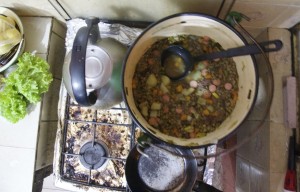
Because Bertha is a big fan of this german dish, I made my first lentils soup. A little piece from home.
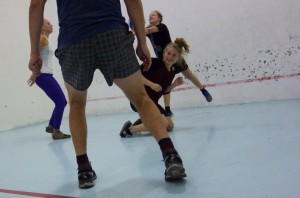
Playing squallyball is really fun, quite physical demanding and played by Tom leaves you some bruises.
Salar de Uyuni – tons of salt at 4000 m
Entering the minivan at 7:30 am several tiered faces that would accompany us the next three days greeted us.
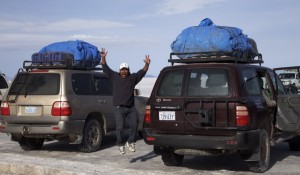
Great guy, always in good mood, with a little knowledge of English, and a save and most important sober driver.
First stop: Police station San Pedro for the emigration stamp from Chile.
Second stop: At already 4000 m for the immigration stamp to Bolivia and finally breakfast. By that time Gigi our Italian companion was already starting to feel sick.
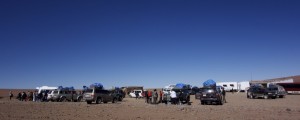
At the border to Bolivia we realized that we were definitely not the only ones going on this trip. Citation Tom: „Must be good, when so many people go there.“
Third stop: Laguna Blanca and Verde. Their colour is determined by different salts and shows up when the wind disrupts the mirroring surface.

I think based on the color that this is Laguna Verde (I was quite confused after five lakes on one day.).
Fourth stop: Dieserto Dali looking like one if Dali’s pictures and thereby getting this name.
Fifth stop: Agua termales a small hot pool set in the beautiful landscape of a salt lake.
Sixth stop: Geyser Sol de Mañana getting its name from the colored ground surrounding the grey mud pools.
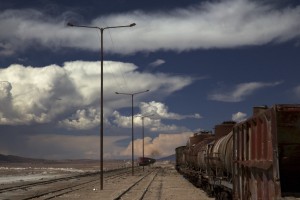
They don’t drive a single meter any more but make for a really good motive. Dead trains on their cemetery.
Seventh stop: Lunch finally at 3 pm.
Eighth stop: Laguna Colorada a salt lake colored like the polish flag. White from the borax salts and red from the algae growing in the flat water, sprinkled with hundreds of pink flamingos.
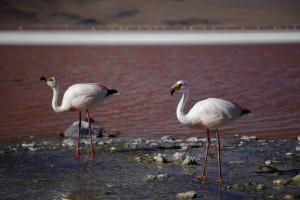
I am not quit sure, whether I got the English/Spanish right, but I think the color is supposed to come from the red algae growing in the lake.

And there were lots of them and we took dozens of pictures so you have to cope a least with the three here.
In between our tight schedule we were driving through a landscape formed of sand and white, yellow and red salt. By the end of the day I had to consult our schedule to remember what we all did. We settled down for the night at 4300 m and slowly the altitude was hitting in. Gigi that didn’t felt well all day were suffering the most not even able to drink a sip of coke no talking of eating or breathing. But no one could really fall a sleep, so we spent hours listening music, watching TopGear and going to the toilet. No wonder everybody was a bit destroyed the next day.
The morning was cold and despite the rainy season beautiful. So off we went to our safari through more desert and salt.
First stop: funny stones washed out by time that everybody was keen to climb except the holly one.
Second stop: more stones that represent the habitat of some ancient plants looking like moos but being hard like stone.
Third to fifth stop: salt lagunes of different size and color all coming with a bunch of flamingos.
Sixth stop: an active Vulcan, by now 60% of the Group were already to tired to get out of the Jeep to take pictures.
And then around the corner it showed up. The biggest salt lake of the world: Salar de Uyuni. The view was impressive and we only got a tiny glimpse of it. Thank to the sunny weather we were able to drive through the salt lake to our final destination: a hostel made of salt. Driving through the endlessness of salt gave us a first taste of what was to come the next day: water like illusions all over the horizon gave a feeling of riding over the sea.
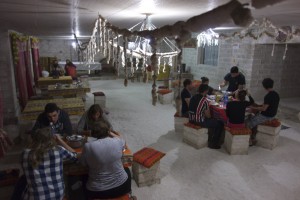
The dinning room in our salt hotel. Even the deco was mad of this corrosive material. And i found the stuff between my toes after dinner.
The next morning after a good nights sleep we entered the jeep at 5 am for our first stop sunrise at the isla de pescada home of hundreds kakti. Unfortunately we missed the sunrise but the scenery was anyway paying of for that.
And than the illusions began first in the whiteness of the salt and than on the thin watery surface on some part of the salt lake. I have never seen something like that.
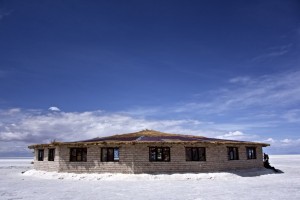
The most popular salt hotel had be to turned into museum due to sanitation issues. Guess it{s not easy to build a sewer into salt.
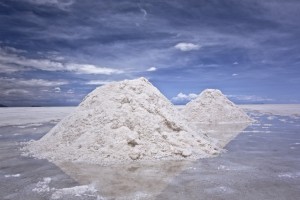
By the way, some of the salt is indeed used form nutritional and cosmetic purposes. Here it’s build into hills to dry before harvesting.
A perfect lunch and a few old trains later we arrived in Uyuni, relaxing with beer and pizza before our bus left for Sucre.

